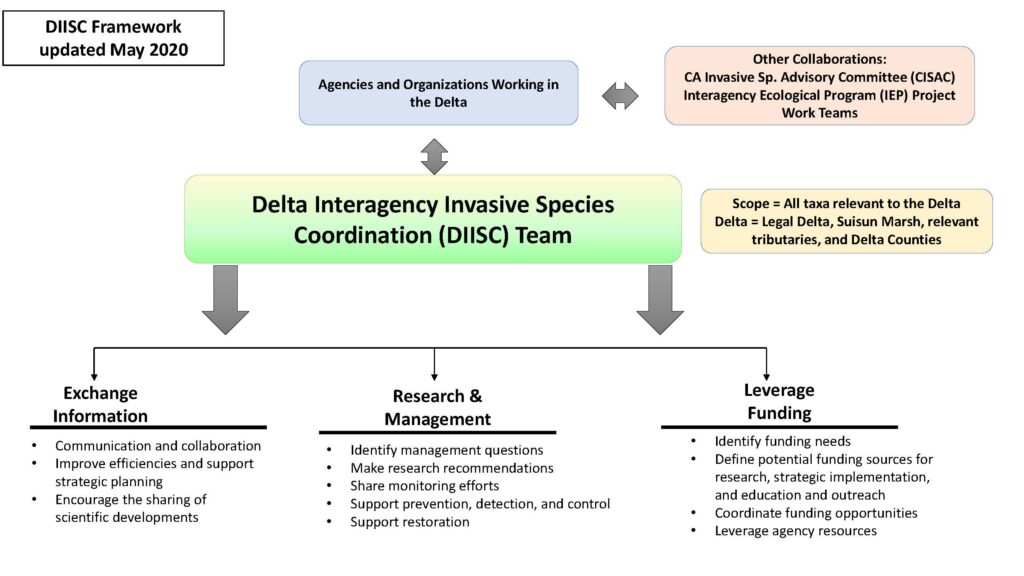About the Delta Interagency Invasive
Species Coordination (DIISC) Team
Purpose
The DIISC Team was formed in 2013 to foster communication and collaboration among California state agencies that detect, prevent, and manage invasive species and restore invaded habitats in the Sacramento-San Joaquin Delta. The DIISC Team includes state agency program managers and scientists, and benefits from participation by research and conservation groups and other stakeholders. The DIISC Team also has involvement from key federal agencies.
As outlined in the Invasive Species Coordination Framework, the goals of the DIISC Team are to establish a framework for:
- Strategic planning
- Coordinated implementation
- Education and outreach
- Data management
- Research needs
- Funding
Background
Invasive species are non-native species whose introduction causes or is likely to cause harm to economies, environment or human health. The Delta is among the world’s estuaries most-invaded by non-native species. At least 185 non-native species are currently present and new species will likely arrive.
The many historical changes to the Delta have made the area more hospitable to certain non-native species. These factors include changes in the timing and volume of flows, salinity levels and other water quality indicators, and reduction and shifting of habitat. Climate change is also expected to favor non-native species over natives.
Although many non-native species will likely remain in the Delta, harmful ecological, economic, and human health impacts from invasive species can be minimized by preventing new introductions and controlling existing ones. Since there is no singular lead entity for managing invasive species in the Delta, the DIISC Team provides a needed forum for the agency collaboration and communication that is essential to preventing and controlling the negative impacts of invasive species.


